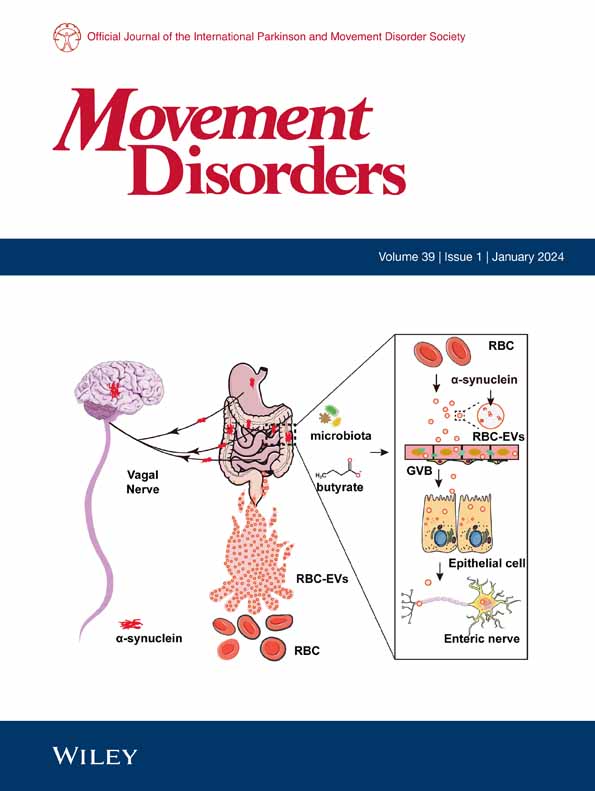重新审视帕金森病的共激活(“Froment’s机动”):一种生理学方法
IF 7.4
1区 医学
Q1 CLINICAL NEUROLOGY
引用次数: 0
摘要
在20世纪20年代,Jules Froment广泛研究了可能加剧帕金森病(PD)患者僵硬的条件。目的:本横断面对照研究旨在探讨生理基础,特别是运动皮质对对侧肢体运动中僵硬增强的贡献。方法记录42例PD患者和42例年龄匹配的健康对照者的运动诱发电位(MEPs)。在多巴胺能激活状态下,分别获得静息和活动运动阈值、MEP潜伏期和振幅、对侧(cCSP)和同侧皮质沉默期(iCSP)以及经胼胝体传导时间(TCT)。结果与对照组相比,PD患者的基线、MEP振幅、iCSP持续时间和TCT均增加。在共激活过程中,PD患者的运动阈值和TCT升高,而cCSP明显降低。结论共激活过程中cCSP的减少指向锥体输出的去抑制。锥体去抑制很可能是协同活化过程中刚性增强的基础。©2025国际帕金森和运动障碍学会。本文章由计算机程序翻译,如有差异,请以英文原文为准。
Revisiting Coactivation (“Froment's Maneuver”) in Parkinson's Disease: A Physiological Approach
BackgroundIn the 1920s, Jules Froment extensively studied conditions that might exacerbate rigidity in persons with Parkinson's disease (PD).ObjectiveThis cross‐sectional, controlled study aimed at investigating the physiological basis, in particular motor cortical contribution to enhanced rigidity during contralateral extremity movements.MethodsMotor‐evoked potentials (MEPs) were recorded in 42 patients with PD and 42 age‐matched healthy control subjects. Resting and active motor thresholds, MEP latency and amplitude, contralateral (cCSP) and ipsilateral cortical silent period (iCSP), and transcallosal conduction time (TCT) were obtained without and during coactivation maneuver in the dopaminergic on state.ResultsAt baseline, MEP amplitudes, iCSP duration, and TCT were increased in patients with PD as compared with control subjects. During coactivation, motor thresholds and TCT increased, whereas cCSP showed a marked decrease in patients with PD.ConclusionsThe reduction of cCSP during coactivation points to a disinhibition of pyramidal output. Pyramidal disinhibition may most likely underlie the enhancement of rigidity during coactivation. © 2025 International Parkinson and Movement Disorder Society.
求助全文
通过发布文献求助,成功后即可免费获取论文全文。
去求助
来源期刊

Movement Disorders
医学-临床神经学
CiteScore
13.30
自引率
8.10%
发文量
371
审稿时长
12 months
期刊介绍:
Movement Disorders publishes a variety of content types including Reviews, Viewpoints, Full Length Articles, Historical Reports, Brief Reports, and Letters. The journal considers original manuscripts on topics related to the diagnosis, therapeutics, pharmacology, biochemistry, physiology, etiology, genetics, and epidemiology of movement disorders. Appropriate topics include Parkinsonism, Chorea, Tremors, Dystonia, Myoclonus, Tics, Tardive Dyskinesia, Spasticity, and Ataxia.
 求助内容:
求助内容: 应助结果提醒方式:
应助结果提醒方式:


